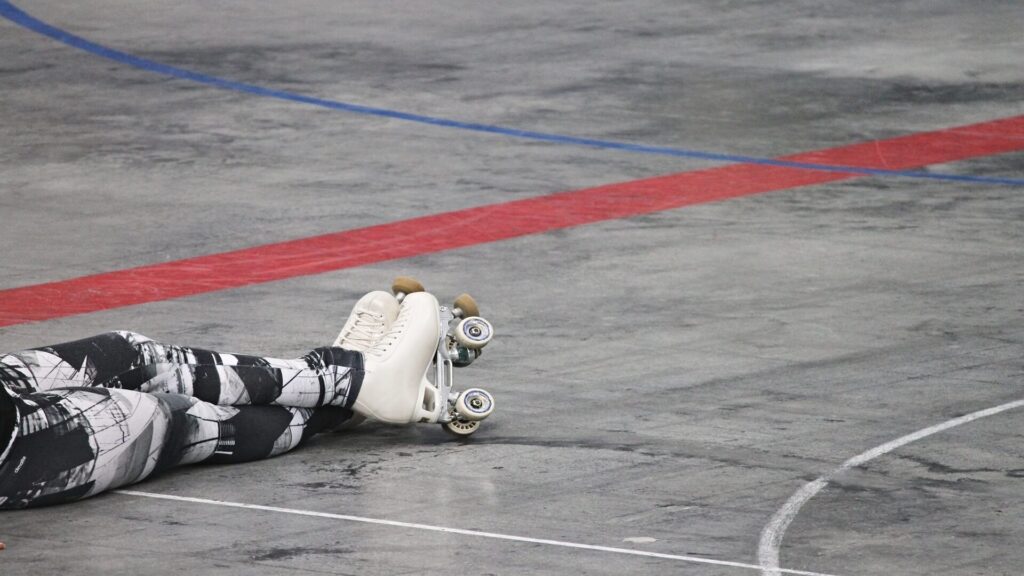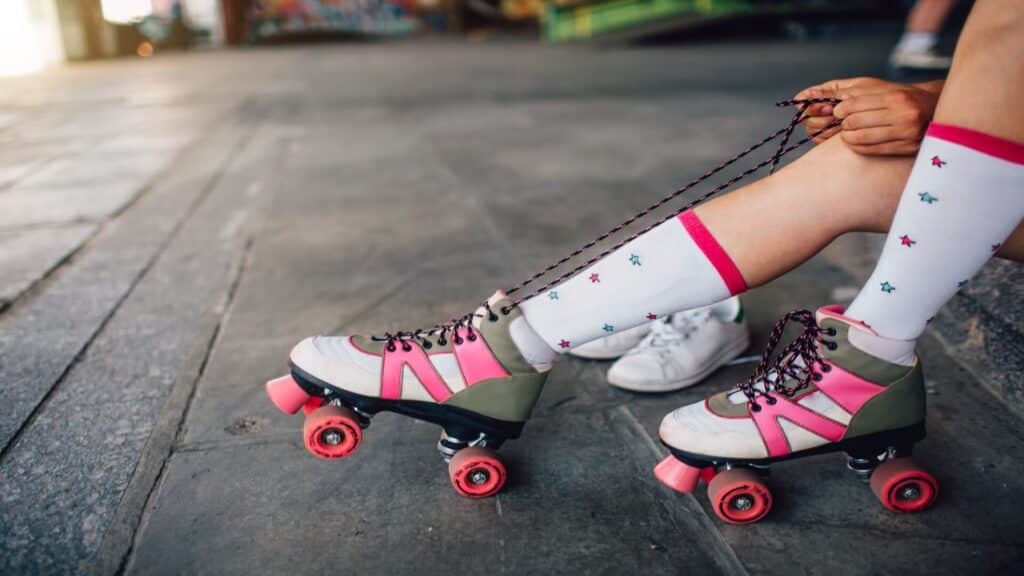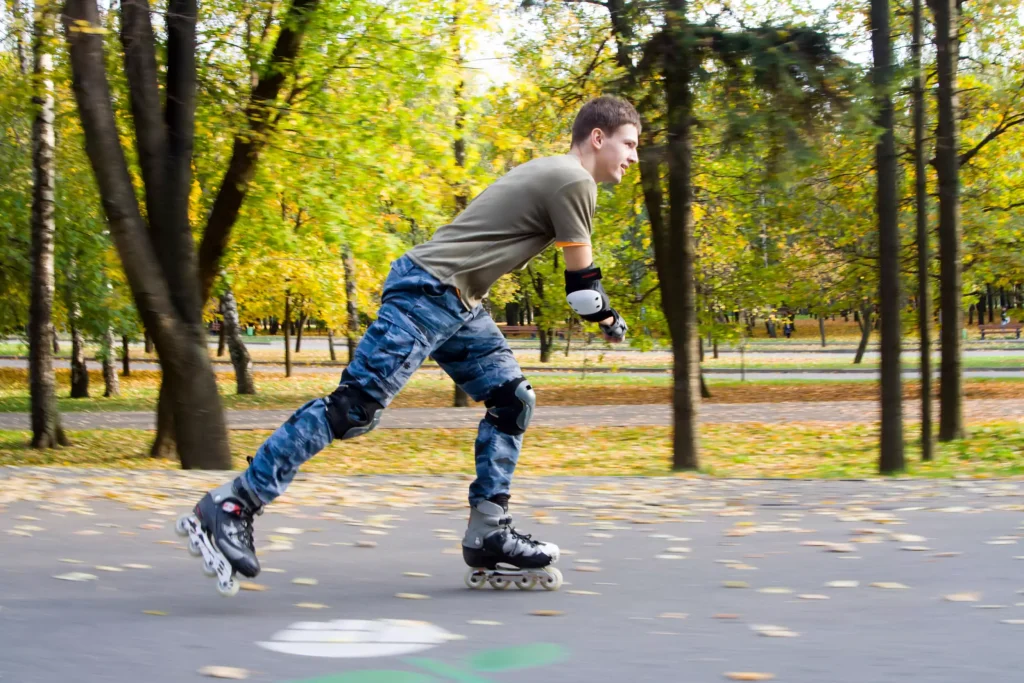Have you ever wondered, How big is a roller skating rink? If so, you’re in the right place. Roller skating rinks come in various sizes, and their dimensions largely depend on factors such as purpose, location, and budget.
In this article, we’ll explore the different sizes of roller skating rinks, the factors that influence their dimensions, and tips for choosing the perfect rink for you.
Table of Contents
So How Big Is A Roller Skating Rink?
Roller skating rinks can be divided into two main categories: recreational and competitive. The size of a roller skating rink depends on its purpose, and this is where the differences between recreational and competitive rinks become apparent. Let’s take a closer look at the typical sizes for each type.
Recreational Roller Skating Rinks
Recreational roller skating rinks cater to casual skaters who want to enjoy a fun and relaxing time on their wheels. These rinks are generally smaller than competitive ones, as they don’t need to meet specific requirements for sports events.
A recreational roller skating rink’s dimensions vary widely, but they typically range from 12,000 to 21,000 square feet (1,115 to 1,950 square meters).
If you wish to know what to wear to a roller skating rink, click here to
Competitive Roller Skating Rinks
When it comes to answering the question, How big is a roller skating rink meant for competitions? The size of the rink becomes more standardized. Competitive roller skating rinks are used for sports like roller derby, roller hockey, and artistic roller skating. These rinks must adhere to specific size requirements set by sports governing bodies.
For instance, roller derby tracks are oval-shaped, with a flat surface measuring approximately 108 feet (32.9 meters) by 75 feet (22.9 meters). Roller hockey rinks are typically 185 feet (56.4 meters) by 85 feet (25.9 meters). For artistic roller skating, the International Skating Union (ISU) mandates a rink size of 131 feet (40 meters) by 65.6 feet (20 meters) for international competitions.
Factors That Determine Roller Skating Rink Size
A number of factors influence the size of a roller skating rink. Some of the main considerations include the following:
Purpose
As mentioned earlier, the purpose of the rink is a major factor. Recreational rinks can be more flexible in their dimensions, while competitive rinks need to meet specific size requirements.
Location
The available space at a particular location can greatly impact the size of a roller skating rink. For example, indoor rinks in urban areas might be smaller due to limited space, while outdoor rinks in suburban or rural areas might have more room to expand.
Budget
Constructing and maintaining a roller skating rink can be costly, especially for larger rinks. The rink owner’s or operator’s budget will likely play a role in determining the rink’s size.
Target Audience
The size of a roller skating rink can also depend on the target audience. For example, a rink primarily catering to families with children might opt for a smaller one to create a more intimate and safe environment. A rink targeting a more athletic audience might be larger to accommodate high-energy sports like roller derby or roller hockey.
Choosing the Perfect Roller Skating Rink for You
So, how big is a roller skating rink that’s perfect for you? It depends on your needs and preferences. Here are some tips for finding the right rink:
Determine Your Purpose
Consider whether you’re looking for a casual skating experience or a competitive environment. Recreational rinks are best for a laid-back, fun atmosphere, while competitive rinks are better suited for honing your skills and participating in sports events.
Research Rink Sizes
Before visiting a roller skating rink, do some research on their dimensions to ensure they meet your expectations. Rinks with websites often provide information on their size, or you can call ahead and ask about their dimensions.
Consider the Location
Keep in mind that the location of a roller skating rink might impact its size. If you prefer larger rinks, look for venues in suburban or rural areas where space constraints might not be as significant. For those with limited options in their area, remember that practice and fun can still be had at smaller rinks.
Assess Your Skill Level
Starting with a smaller rink might be more comfortable for beginners or those returning to roller skating after a long break. As you become more confident in your skates, you can gradually try out larger rinks that provide more space for speed, maneuvers, and sports activities.
Visit Multiple Rinks
Don’t hesitate to visit multiple venues to find the perfect roller skating rink for you. Each rink will have its unique characteristics and atmosphere, and trying out different rinks will help you determine which size and environment best suit your preferences.
Conclusion
The answer to the question, How big is a roller skating rink? Depends on various factors such as purpose, location, budget, and target audience. Recreational roller skating rinks typically range from 12,000 to 21,000 square feet, while competitive rinks have standardized dimensions depending on the specific sport.
When looking for the perfect roller skating rink, consider your purpose, research rink sizes, evaluate the location, assess your skill level, and visit multiple rinks to find the ideal fit for your skating needs. Happy skating!
FAQs
Question: How big is a typical recreational roller skating rink?
Answer: Recreational roller skating rinks can vary in size but typically range from 12,000 to 21,000 square feet (1,115 to 1,950 square meters).
Question: Are competitive roller skating rinks larger than recreational rinks?
Answer: Competitive roller skating rinks have standardized dimensions depending on the specific sport. They can be larger or smaller than recreational rinks, depending on the requirements set by sports governing bodies.
Question: What are the standard sizes for roller derby, roller hockey, and artistic roller skating rinks?
Answer: Roller derby tracks measure approximately 108 feet (32.9 meters) by 75 feet (22.9 meters), roller hockey rinks are typically 185 feet (56.4 meters) by 85 feet (25.9 meters), and artistic roller skating rinks follow International Skating Union (ISU) standards of 131 feet (40 meters) by 65.6 feet (20 meters) for international competitions.
Question: What factors determine the size of a roller skating rink?
Answer: The size of a roller skating rink can be influenced by its purpose, location, budget, and target audience.
Question: Are smaller roller skating rinks suitable for beginners?
Answer: Yes, smaller roller skating rinks can be more comfortable and less intimidating for beginners or those returning to roller skating after a long break. As your skills and confidence grow, you can explore larger rinks and different skating environments.









